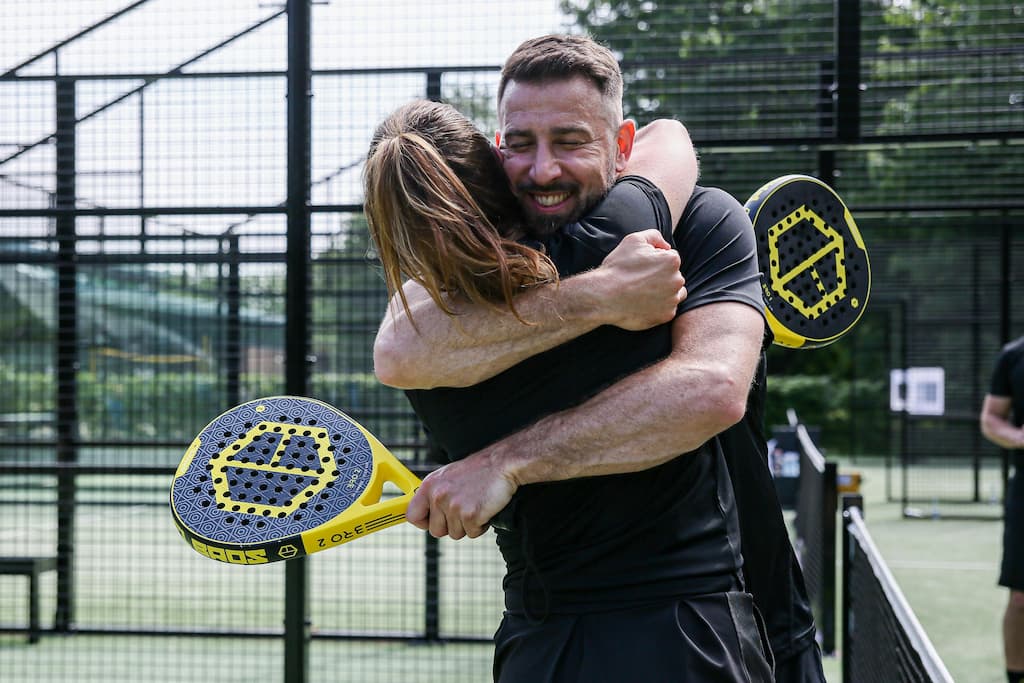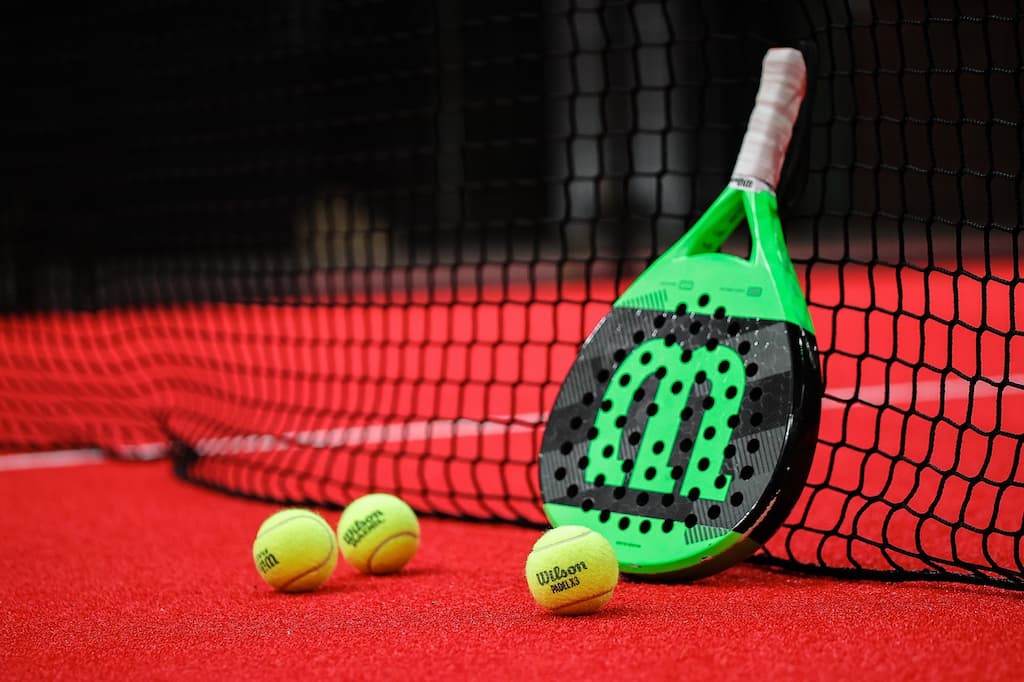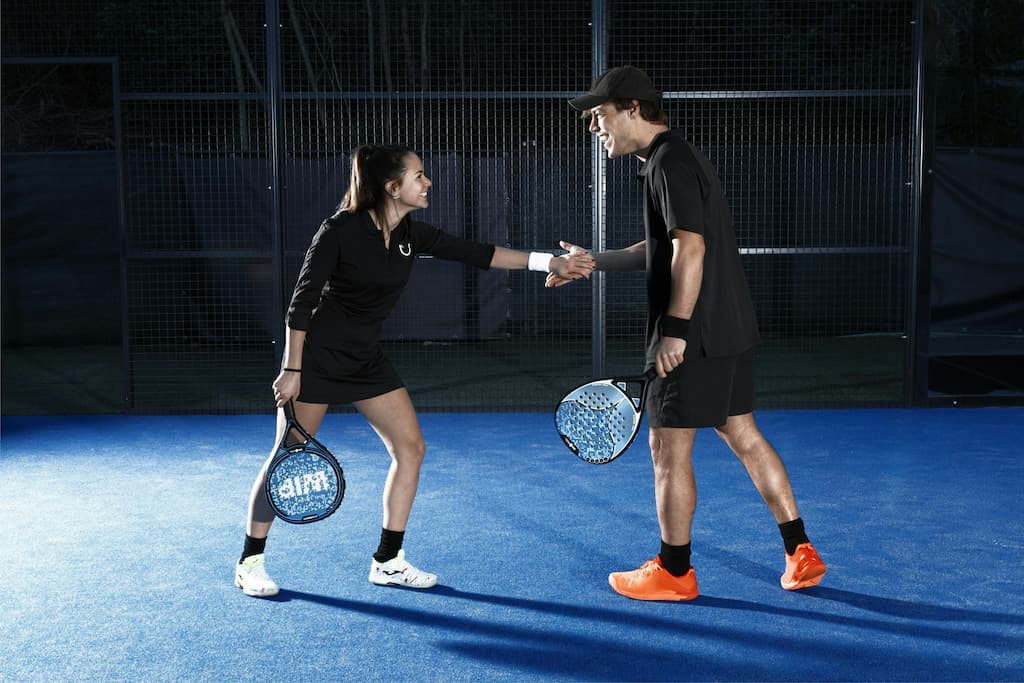Padel is a sport that has been growing in popularity around the world. It is a racquet sport that is played in doubles on a smaller court than tennis. The sport originated in Mexico, but it has gained a strong following in Spain, a country where it is now the second most popular sport after soccer.
One of the reasons for the sport’s popularity is the strong sense of community that it fosters. Padel is a social sport that encourages players to interact with one another and build relationships. Many players join padel clubs where they can meet other players, participate in tournaments, and take lessons to improve their game.
Key Takeaways
- Padel is a social sport that fosters a strong sense of community among players.
- Beginners can find resources to help them get started in the sport, including lessons and instructional materials.
- Experienced players can focus on improving their game and competing in tournaments.
Community and Social Aspects

Social Atmosphere
One of the most appealing aspects of the Padel community is the social atmosphere that surrounds it. Players of all levels and ages come together to enjoy the sport and create lasting friendships. Whether it’s a friendly game or a competitive match, the social aspect of Padel is always present.
Padel clubs often organize social events such as tournaments, barbecues, and parties, which provide an opportunity for players to interact with each other outside of the court. These events help to create a sense of community and belonging, and players often look forward to them as much as they do to playing their first Padel court.
Camaraderie and Belonging
The sense of camaraderie and belonging in the Padel community is undeniable. Players support each other both on and off the court, and there is a real sense of teamwork and camaraderie among players.
The sport is often described as being more social than other racquet sports, and this is reflected in the way that players interact with each other. Whether it’s cheering on a teammate, congratulating an opponent on a great shot, or simply chatting with other players after a game, a sense of community and belonging is always present.
Overall, the social and community aspects of the Padel community are a major part of what makes the sport so appealing. Whether you’re a seasoned player or just starting out, you’re sure to find a welcoming and supportive community that will help you improve your game and make lasting friendships.
Getting Started in Padel
Choosing a Club
When looking to get started in Padel, the first step is to find a club that suits your needs. It is important to choose a club that is easily accessible and has the necessary facilities to accommodate beginners. Most padel clubs offer rental equipment, so you do not need to worry about purchasing your own gear right away.
It is also recommended to visit the club and observe the playing environment before joining. This will give you an idea of the level of play and the overall atmosphere of the club. Some clubs may have a more competitive environment, while others may focus more on recreational play.
Orientation for Beginners
Once you have chosen a club, it is important for beginners to attend an orientation session. This will provide you with an introduction to the game, including the rules, the scoring system, and basic techniques. The orientation session will also give you an opportunity to meet other beginners and start building your Padel community.
During the orientation session, you will also learn about the different types of equipment used in Padel, such as rackets and balls. The instructor will provide guidance on how to choose the right equipment for your skill level and playing style.
Overall, getting started in Padel requires choosing the right club and attending an orientation session for beginners. With the right resources and guidance, beginners can quickly become comfortable with the game and start enjoying the benefits of being part of the Padel community.
Padel Clubs and Facilities

Padel has gained immense popularity in recent years, and the growth of Padel clubs and facilities has been significant. Padel clubs offer a variety of services and facilities to Padel enthusiasts, including courts, coaching, and social events. In this section, we will look at the club membership, facilities, and quality of Padel clubs.
Club Membership
Padel clubs offer different types of membership, including individual, family, and corporate memberships. The membership fees vary from club to club, and some clubs offer discounts for long-term memberships. Membership applications are usually available online, and the process is straightforward.
Facilities and Quality
Padel clubs have different facilities, and the quality of the facilities varies from club to club. Most clubs have multiple courts, and some have up to 30 courts. The courts are usually made of artificial grass or acrylic, and some clubs have indoor courts with lights for playing at night.
The quality of the courts is essential for a good Padel experience, and most clubs maintain their courts regularly. The surrounding areas of the courts are also important, and some clubs have cafes, restaurants, and shops nearby that serve them.
In conclusion, Padel clubs offer a range of facilities and services to Padel enthusiasts, and the quality of these facilities varies from club to club. The membership process is straightforward, and the fees vary from club to club. Padel clubs are an excellent place to meet like-minded people and improve your Padel skills.
Competitive Play
Padel is a sport that has been growing in popularity around the world, and with that growth comes a competitive scene. Competitive play is an exciting way for players to test their skills against others and experience the thrill of victory. In this section, we will explore the various aspects of competitive play in Padel, including tournaments, games, leagues, and rankings.
Tournaments
Tournaments are an important part of competitive play in Padel. They provide players with the opportunity to compete against others of similar skill levels and to showcase their skills on a larger stage. There are a variety of tournaments available for players of all skill levels, from local events to international competitions.
One of the most prestigious Padel tournaments is the World Padel Tour, which attracts the best players from around the world. Other notable tournaments include the Padel Pro Tour, the International Padel Experience, and the European Padel Championship.
Leagues and Rankings
Leagues and rankings are another important aspect of competitive play in Padel. Leagues provide players with the opportunity to compete against others on a regular basis, and to improve their skills over time. Many leagues are organized by local clubs or associations and offer a variety of skill levels for players to choose from.
Rankings are used to determine a player’s skill level and to track their progress over time. The World Padel Tour maintains a ranking system for professional players, while other organizations have their own ranking systems for amateurs and semi-professional players.
In conclusion, competitive play is an exciting way for Padel players to test their skills and experience the thrill of victory. Tournaments, leagues, and rankings all play an important role in the competitive scene and offer players a variety of opportunities to improve their skills and compete against others.
Local and Global Events
The Padel community is a thriving one, with events taking place both locally and globally. These events provide opportunities for players to showcase their skills, as well as for fans to come together and support their favorite players.
Local events are a great way for players to get exposure and build their reputations within the community. These events can range from small local tournaments to larger regional competitions. They provide a platform for players to showcase their skills, win, and compete against others in their area.
On a global scale, there are also a number of events that attract players and fans from all over the world. The World Padel Tour is one of the most prestigious events in the sport, featuring some of the best players in the world. Other notable events include the Padel Pro Tour, the International Padel Experience, and the European Padel Championships.
In addition to these events, there are also a number of initiatives aimed at promoting the sport and growing the community. For example, the International Padel Federation works to promote the sport on a global scale, while local organizations and clubs work to build and strengthen the community at a grassroots level.
Overall, the Padel community is a vibrant and growing one, with events and initiatives aimed at promoting the sport and bringing people together. Whether you’re a player or a fan, there are plenty of opportunities to get involved and be a part of this exciting community.
Conclusion
In conclusion, the Padel community has seen significant growth in recent years. With the increasing number of players and facilities, it is evident that Padel is becoming a popular sport worldwide. The sport’s unique characteristics, such as its simplicity and social nature, make it accessible to individuals of all ages and skill levels.
Moreover, the sport’s relatively low cost and easy-to-learn rules make it an attractive option for those looking for a fun and engaging activity. The Padel community is also known for its welcoming and inclusive nature, with players often forming strong bonds through the sport.
As the sport continues to gain popularity, it is essential for the Padel community to maintain its values and principles. The community must ensure that the sport remains accessible to all and the Padel coach continues to foster a welcoming and inclusive environment for all players.
Overall, the Padel community’s growth is a testament to the sport’s unique appeal and the passion of its players. With the continued support of the community, Padel is poised to become one of the most popular sports in the world.
Frequently Asked Questions
How can I become a member of a local Padel community?
To become a member of a local Padel community, you can visit their website or contact them directly. Most Padel clubs have a membership program that offers various benefits, such as access to courts, coaching, and events. You may have to fill out an application form and pay a membership fee to join.
What are the costs associated with joining a Padel club?
The costs associated with joining a Padel club may vary depending on the location and the club’s facilities. Generally, the membership fees can range from $50 to $200 per month. Some clubs may also charge an initiation fee or a court fee per hour. It is best to contact the club directly to get an accurate estimate of the costs.
Where can I find Padel courts near my location?
You can find Padel courts near your location by searching online or using a Padel court locator tool. Many Padel clubs have their own websites that provide information about their facilities and locations. You can also check with your local sports center or community center to see if they have Padel courts available.

